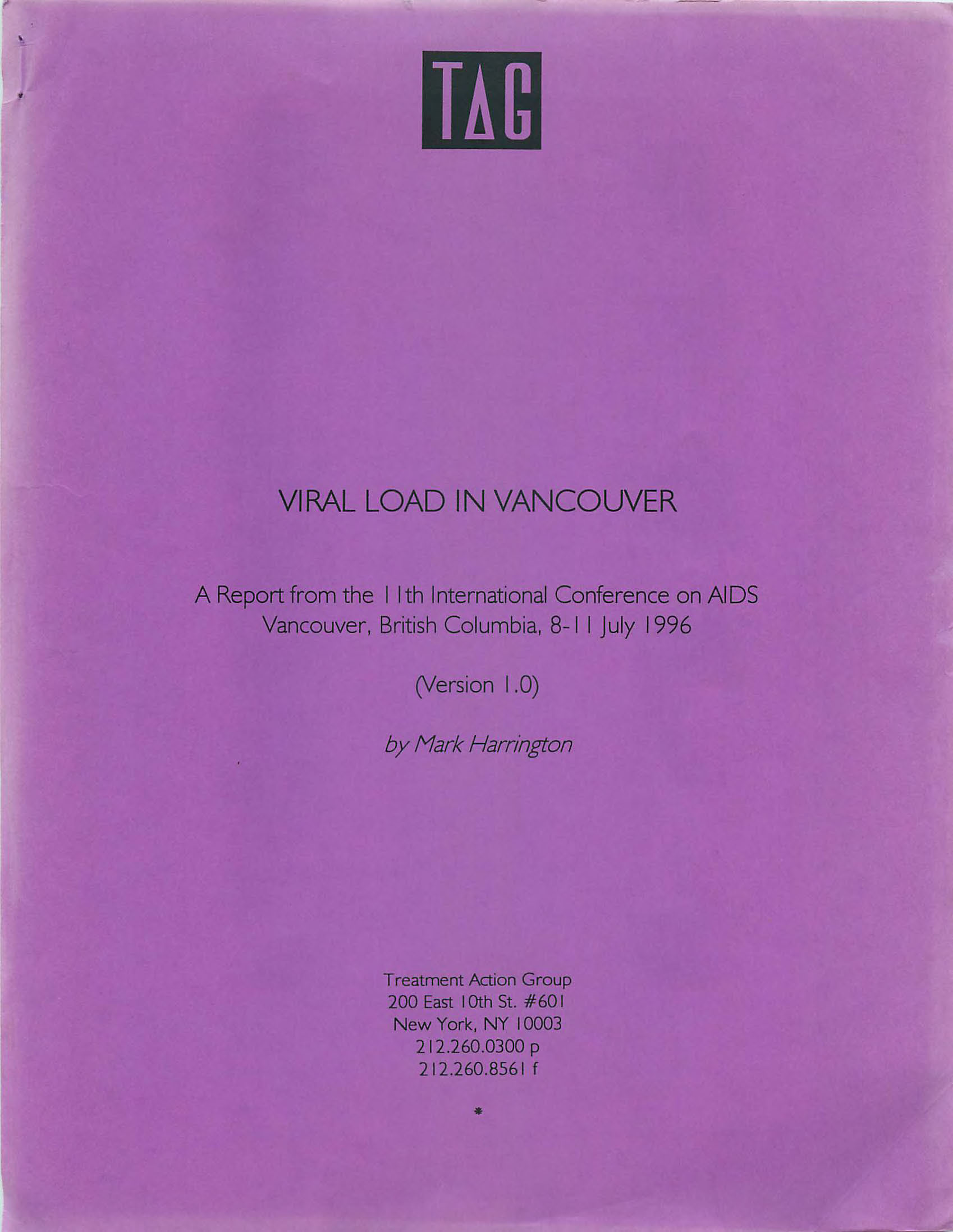Download:

A Report from the 11th International Conference on AIDS
Vancouver, British Columbia, 8-11 July 1996
By Mark Harrington
From the Introduction
The year 1996 has brought a sea change in AIDS research and treatment. Three major factors have contributed to this sea change: a new understanding of viral pathogenesis, new and powerful antiretroviral treatment regimens, and new, more powerful tools for measuring HIV levels in the blood and elsewhere in the body. Indeed. it was due to the sensitivity of these new viral load assays that researchers were able to determine the kinetics of HIV replication and immune system clearance within the infected human host, and devise new therapeutic approaches to reduce viral replication. The impact of the viral load assays on HIV pathogenesis and treatment research can be compared to the impact of the Hubble Space Telescope on cosmology: both allowed researchers to see their subject with unprecedented resolution.
Previous methods of quantifying viral activity were cruder and much less sensitive than the new viral load assays, most of which measure HIV ribonucleic acid (RNA) in the blood. Originally, HIV infection was diagnosed indirectly, by detecting antibodies with ELISA or Western Blot tests. Later, several companies developed p24 antigen capture assays to measure blood levels of the viral capsid protein p24. Unfortunately, p241evels correlated poorly with progression; many people progressed to AIDS and died without any detectable p24 in their blood. Whatever p24 they had was bound to anti-p24 antibodies and therefore undetectable. Subsequently. immune-complex dissociated (ICD) p24 assays were developed to address this problem, but p24 remained an insensitive marker for viral replication.
Treatment research was stymied by the limitations of previous tests. Some researchers used p24 to monitor treatment effects, while others used quantitative co-cultures, putting blood cells from HIVinfected persons into culture with T cell lines and counting the number of p24 particles which emerged. Like p24 antigen tests, however, quantitative microculture techniques were limited by their lack of sensitivity; virus could be cultured from less than 50% of patients with more than 200 CD4 cells/mm3 (Saag 1996). Most common of all was the use of the peripheral blood CD4+ T lymphocyte count to assess treatment effects. While CD4+ T cell levels give an accurate picture of the degree of immune destruction. and provide valuable short-term prognostic information on a given individual’s risk of progression and death, they are highly variable and do not give a direct picture of the level of viral activity.
After the XI International Conference on AIDS in Vancouver. British Columbia, on 8-1 I July, 1996, it is clear that monitoring of plasma HIV RNA levels will become a standard tool for diagnosis, prognosis and treatment of HIV infection and for the medical monitoring of antiretroviral therapy. CD4+ T cell monitoring remains an Important parameter. especially in more Immune-compromised persons, but viral load will be a key determinant in initiating and changing treatment regimens.
Unfortunately, while its usefulness is clear, how best to use viral load monitoring is still far from obvious, and there are several competing approaches to controlling viral load, which must be rigorously compared. Moreover, the addition of viral load monitoring adds to the already swelling costs of HIV care, and the necessary frequency of testing is far from clear. Finally, not all the tests are yet FDA-approved, and the cost of the one approved thus far, Roche’s Amplicor1M PCR test, is $1 50 per test in the USA (while it is less than half that in Canada). Perhaps FDA approval of competing tests will impose competitive pressure on Roche to lower its price.
This report is an interim attempt to survey the rapidly-evolving field of research using viral load tests for the diagnosis, prognosis and treatment of HIV infection, to determine what is known and to pose some questions about what remains to be determined. References in the text are generally to abstracts from the XI International Conference on AIDS, which can be accessed on the Internet through the American Medical Association (AMA) homepage at http:www.ama-assn.org. Health Care Communications Group (HCG) provides access to the AMA HIV homepage and to daily conference summaries at http:www.healthcg.com.
